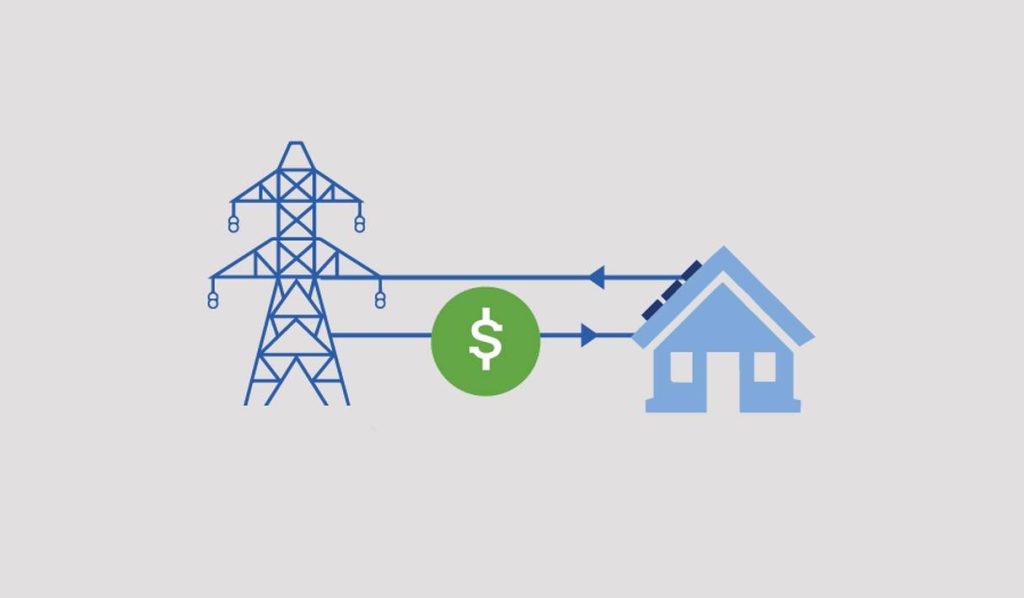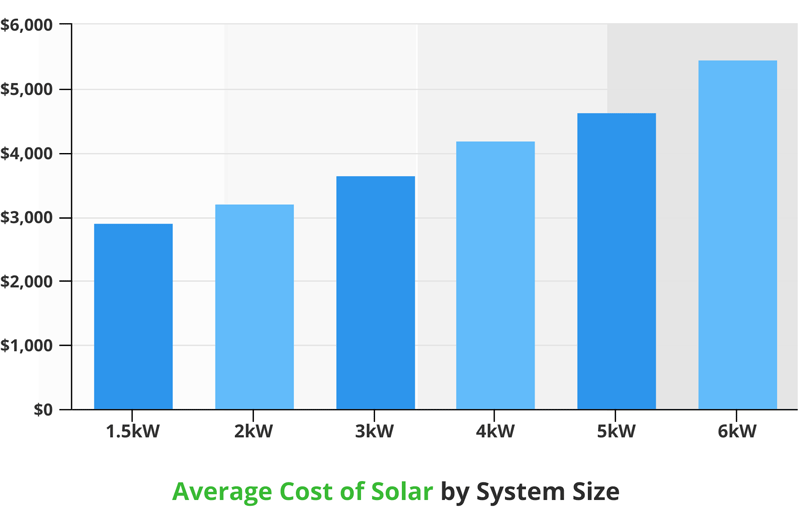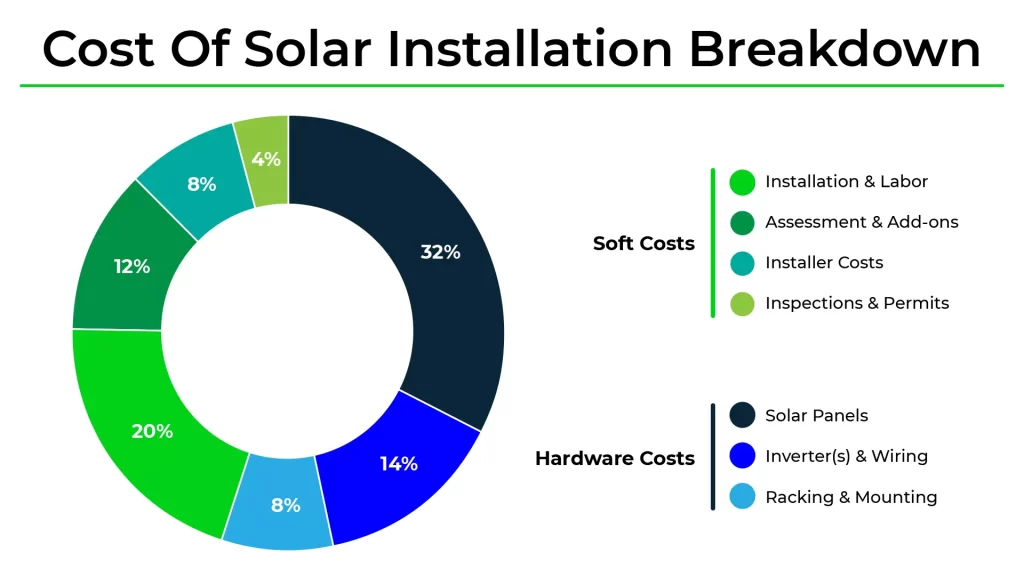
The global community is increasingly adopting renewable energy sources like solar to curb hazardous gas emissions. Solar energy stands out […]

Are you interested in solar panel installation but unsure of the cost? You’re not alone – this is a common question. When it comes to solar installation, there are a lot of factors that go into the overall cost. In this blog post, we’ll take a look at some of the most important factors that impact the solar panels price and give you an idea of what you can expect to pay for solar panel installation. Keep in mind that the final cost will vary depending on your location and the specific system that you choose. So let’s get started!
Be it a B2B or B2C industry, the first question that pops in mind every time one invests money is related to cost. Likewise, the global solar power industry has gone through several cost and technology fluctuations over the years. We’ll discuss these trends and patterns in this article with a special focus on the target market-based in Australia.
Solar Power Made Affordable: Government Rebates, Zero Upfront Fees. Embrace a brighter future with solar power.
Before the solar industry underwent the boom around 2008, prices ranged as high as $20 per watt. Such a high cost translated to the adoption of this technology by a specific high-income economic group; while, a large segment of the population still hesitated to make the change.
Then, within a year, the government launched high-value tariffs that lured in a lot of new customers.
The offer of 60 c/kWh that consumers sent back to the grid became a huge hit and eventually widened the user base by massive percentages. Around the year 2011, several solar installation companies offering better prices came up, and the federal rebate program was started.
The program, to date, provides a huge benefit to people on the upfront cost of the installation and, in turn, became a big turn point for the solar scene in Australia.
To understand the actual cost of solar power installation in Australia during current times, you must know that the advertised price of a solar power system mostly includes the cost of installation too. Though, you might get additional benefits after applying for the solar panel rebates.
So, suppose an installation company quotes $6000 for a 6.6kWh system, then you won’t have to pay any additional amount for the actual installation process. In fact, customers should beware of companies that claim to charge extra for this purpose.
Another thing one must take care of is that you should avail services from a certified installer only, as the rebate won’t be applicable if you do otherwise. Now, depending on the state you reside in, the actual cost might differ.
Some areas, for example, might charge higher than others. The reason behind this lies in the rebate policy because each state pays different rebate amounts to the center.
Also, the number of PV panels that can generate a specific amount of electricity varies by location. Hence, one might have to invest in a higher number of panels if they reside in an area where the average power generation per panel is relatively lower.
To determine the cost of the panels per watt, you first have to consider the overall size of the system and the state-wise rebates offered. For some context, if you go for a 5kWh system, then the per watt panel price is around AUD 1.04. However, it comes down to AUD 0.92 if the system size is increased to 10kWh.
If we keep the global solar power industry in consideration, the panel cost on a per kWh basis in Australia is one of the cheapest. All thanks to the government rebates, initiatives, and the flourishing solar scene in the country, the prices have come down to extremely economical for the common man.
For instance, if someone goes for a good quality solar panel system, the price per kWh can be anywhere between $900 to $1000.
It is very important to understand what solar will cost in each state, it is because prices vary tremendously depending on what state you live in. And, there are many reasons for this and the most important one is system size. Now you must be wondering how does this work?
So, if you have a larger system then the lesser you will be charged per kilowatt-hour (kWh). It is more like a business thing, if you buy in bulk then you will have to pay less comparatively than buying a single piece.
|
SYSTEM SIZE |
AVERAGE SOLAR PANEL SYSTEM COST (BEFORE TAX CREDITS) |
AVERAGE SOLAR PANEL SYSTEM COST (AFTER TAX CREDITS) |
$/W |
|---|---|---|---|
|
2 kW |
$6,822 |
$5,048 |
$3.41 |
|
3 kW |
$9,159 |
$6,778 |
$3.05 |
|
4 kW |
$11,524 |
$8,528 |
$2.88 |
|
5 kW |
$14,111 |
$10,442 |
$2.82 |
|
6 kW |
$16,857 |
$12,474 |
$2.81 |
|
7 kW |
$19,436 |
$14,382 |
$2.78 |
|
8 kW |
$21,968 |
$16,256 |
$2.75 |
|
9 kW |
$24,706 |
$18,283 |
$2.75 |
|
10 kW |
$27,541 |
$20,381 |
$2.75 |
|
11 kW |
$29,657 |
$21,946 |
$2.70 |
|
12 kW |
$32,135 |
$23,780 |
$2.68 |
Generally, in some states, the homeowners make use of air conditioning more often than the homeowners in other states. So, large solar panel systems are installed in sunny and warm states, for instance, Florida and Arizona.
Roughly one can say that for warm states it would cost more and for cold states it would cost less. But if there is a difference in a system size then, it might cost less for a warm state if a larger panel system size, and cost more for a cold state if a smaller panel system size.
In Australia average solar panels cost are around $5250 after government rebates. Prices vary in different states with Darwin, which is the most expensive and Sydney and Perth are among the most affordable.

In most states in Australia, a commonly sized 6kW Solar PV System would cost $4,000 to $6,000 and a 10kW system would cost $7,500 to $10,500. The average solar price for a good quality 5kW solar system in Sydney starts at $5,500. You should expect to pay around $7,000, if you want panel-level output.
$9,000 are required for a high-efficiency panels with all the bells and whistles. At least 627 GW of photovoltaic (PV) are installed worldwide according to International Energy Agency (IEA). Solar contributes almost 3% of the total worldwide in 2020, as a percentage of global power generation.
Small-scale solar (systems up to 100 kW) was responsible for 23.5 percent of Australia’s clean energy generation and 6.5 percent of the country’s total electricity was produced in 2020.
|
State |
1.5 kW |
2kW |
3kW |
4Kw |
5Kw |
6Kw |
|---|---|---|---|---|---|---|
|
Western Australia |
$2,450 |
$2,710 |
$3,010 |
$3,540 |
$3,650 |
$4,210 |
|
Victoria |
$3,215 |
$3,478 |
$3,984 |
$4,599 |
$5,440 |
$6,650 |
|
South Australia |
$2,792 |
$3,150 |
$3,650 |
$4,185 |
$4,722 |
$5,320 |
|
Queensland |
$3,280 |
$3,620 |
$3,860 |
$4,650 |
$4,980 |
$5,638 |
|
New South Wales |
$2,950 |
$3,230 |
$3,690 |
$4,055 |
$4,450 |
$5,166 |
|
Avg. of All combined |
$2,909 |
$3,211 |
$3,655 |
$4,201 |
$4,633 |
$5,466 |
|
Aust. Capital Territory |
$2,770 |
$3,080 |
$3,740 |
$4,180 |
$4,560 |
$5,810 |

Not only does your location and panel system size matter there are also many other factors other than these two.
While installing some solar panels, one must make sure to choose the brand of the equipment wisely because this has a huge impact on the final cost you pay.
Characteristics of the roof of your home matter so much because if your roof has better sun exposure than not many panels are needed which in turn decreases your costs.
It is easier for installers to install panels on such a single roof plane, for instance, a south-facing roof than on a roof with multiple levels, because then it can cause additional installation costs.
When you install solar panels, you would also have to fulfill the cost of the interconnection fee and solar permits. Interconnection is basically getting your solar energy system connected to the grid and this interconnection is obtained by paying some fee, once you obtain your solar permit documents.
So, finding yourself ways to make your interconnection process cheaper and quicker is also a very important factor.
Since there are different installers and the amount they charge for their services varies. Finding yourself a well-regarded solar installer providing a premium warranty offer would definitely charge more for their installation job but it will be worth your money.
A Solar panel provides direct current and our home needs alternating current for usage, therefore a solar inverter is also needed to be installed which can convert the direct current power from panels into alternating current so that you can use it at your home. Thus, keeping in mind the cost of solar inverters is also one of the factors.
Not always the solar panels will get direct sunlight, sometimes the surrounding trees or buildings might cover the solar panels or maybe the sun is affected by the weather conditions like rain, snow, or clouds.
An installer considers some factors like location, shade, material, or dimensions. This also has a direct effect on the total cost you will incur to install the PV modules.
You can pay for solar panel installation in five different ways. Each of them has its pros and cons. But there are only two ways worth considering for the vast majority of businesses, farms, and homes.
To avoid the upfront costs, PPA is the best way. They own your system. You do not even have to pay a fixed amount every month. In this case, you are supposed to pay for whatever your solar power system generates per-kilowatt rate.
Your traditional power company will give you the power you need to draw from the grid. The solar panel installer charges you for the power that your system produces, therefore, the solar panel installer is your new power company.
So, it is like having two power bills. PPA helps you with lowering your rates compared to your normal power company which helps you save money. PPA and lease also help you with zero tax credits.
It is not very wise to install solar panels by DIY because it is also dangerously life-threatening at worst. Honestly, DIY solar panel installation is not going to cost you less but more. The main reason is the huge tax incentives. When a solar panel installation is done by a certified professional, then only incentives are given out.
There is only one benefit provided by the solar kit peddlers and that is cost savings, but except for the fact when you later find out, you didn’t actually save any money.
Why?
Because the system might not be installed or designed properly. So, this way you can lose the tax incentives and you might also lose because your installed system might not produce enough energy as it should where you have spent months and a pro would have installed it in less than a week.
Therefore, a DIY solar panel installation is the worst option out of five.
Cash upfronts have many benefits for your solar panel installation. Some of them are:
Once you buy an upfront then any benefit of solar energy is yours.
A solar lease is renting the installed components that you take advantage of. The solar panel installation company which has installed the panels, inverter, and all the other components own it and you pay rent for it.
You pay a fixed amount per month and this does not depend on the amount of power generated. This price might not remain the same for a whole 20 years because the owner of solar panels definitely doesn’t want to lock the price as same for that long.
Solar leases might seem amazing to some people but the problem lies here –
The real owner gets benefited from all of the tax incentives that is all that money is obtained by the solar panel installation company. And sometimes there is going to be a lesser sunny month thus lesser power production but you would still have to pay the full price of the lease. In the end, you might not save enough money.
Solar Solutions at Zero Cost: Government Rebated Installations! Invest in Sunshine with No Upfront Costs.
Solar financing is far better than leasing because of the money that you save. With financing, you own the whole system and have to pay only once while buying it and with a lease, you would have to pay for it again and again and you do not own it unless you decide to buy it outright – which will cost you even more.
Another important thing is that you get tax incentives, unlike leasing. You can save 26% to 60% on your solar panel installation bill because of local tax incentives, state, Federal, and also depending upon where you live.
Yes, there are incentives and tax credits available for solar power systems in Australia. The federal government provides a Small-scale Technology Certificate (STC) program that provides rebates for households and businesses that install solar power systems.
The amount of the rebate is based on the size of the system and the location of the installation, and it is designed to offset the upfront cost of the system. In addition, some states and territories have their own rebates and incentives for solar power systems. It’s recommended to check with your local government to see what incentives are available in your area.
Yes, financing is available for solar power systems in Australia. There are several options for financing solar power systems, including loans, leases, and power purchase agreements. Many banks and specialized solar financing companies offer loans for solar power systems, with terms and interest rates varying based on the provider and the individual’s circumstances.
Leasing and power purchase agreements allow homeowners to have a solar power system installed on their property without having to pay the full upfront cost, instead paying a monthly fee for the use of the system. It’s important to shop around and compare different financing options to find the best fit for your needs and budget.
Installing a solar power system can pay for itself over time through the savings on monthly electricity bills. The amount of time it takes for a solar power system to pay for itself will depend on several factors, including:
On average, a solar power system in Australia can pay for itself in 5 to 10 years, and it can continue to generate electricity and save money for 25 years or more. It’s important to consult with a professional solar installer to determine the specific savings and payback period for your situation.
Solar power systems can last 25 years or more with proper maintenance and upkeep. The lifespan of a solar power system depends on several factors, including the quality of the equipment used, the installation method, and the amount of maintenance the system receives.
High-quality solar panels, inverters, and other components can last for decades, and regular cleaning and inspection can help ensure that the system continues to operate at its peak efficiency. With proper care, a solar power system can continue to generate electricity for many years after its initial installation, providing long-term savings and a reduction in carbon emissions.